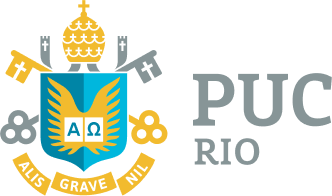Z-13 Fishing Colony
The Z-13 Fishing Colony at Posto 6, on Copacabana Beach is one of the last remnants of the fishing tradition in one of Rio de Janeiro’s most urbanized areas. Established over a century ago, Z-13 plays a vital role in supplying the city with fish and, above all, in preserving a culture that dates back to the neighborhood’s origins.
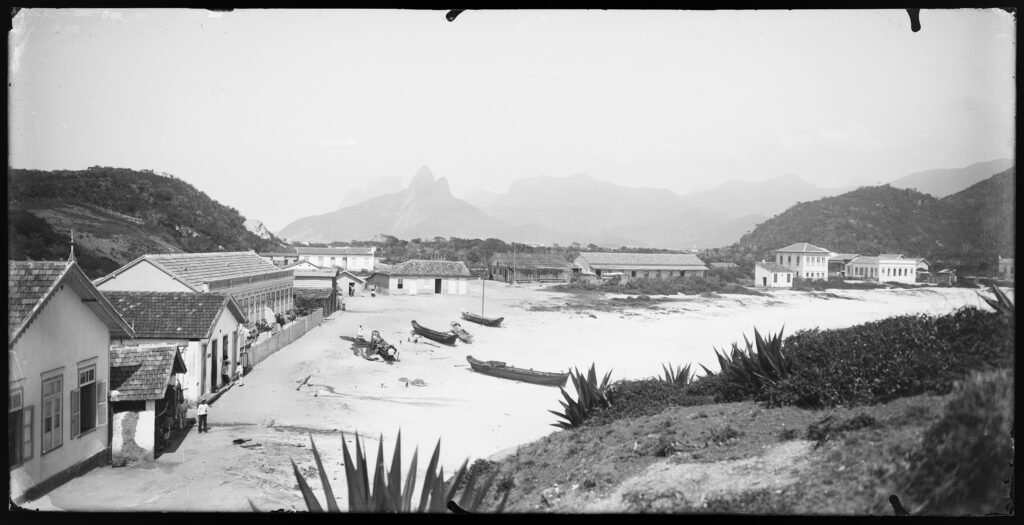
Marc Ferrez. Rock where the Copacabana Fort stands, nowadays Posto 6, with the Dois Irmãos Rock in the background, 1900. Gilberto Ferrez Collection, Moreira Salles Institute.
Z-13 was founded on 29 June 1923, St Peter´s Day — the patron saint of fishers. The colony functions on the basis of collective labor and artisanal fishing methods. It is responsible for preserving traditions, contributing to sustainability and conserving nature in the region, which has been greatly affected by industrial fishing in recent years.
The colony is a symbol of cultural resilience. At Posto 6, fisher people still weave nets and carry out their activities by the beach, preserving a rustic scene that contrasts with the bustling life of Copacabana. The small beach area where Z-13 is located is surrounded by large almond trees, and is full of nets and boats, making the colony a haven in the urban landscape of Rio de Janeiro, known as the ´Marvelous City´.
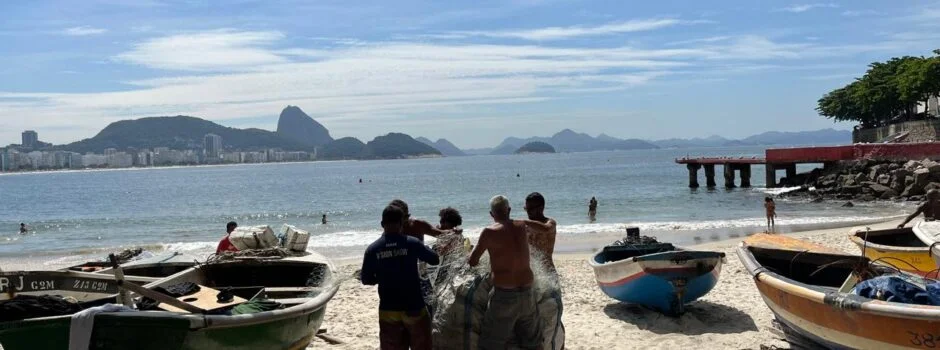
From the site Orla Rio
The Z-13 Fishing Colony also plays an important role in shaping the cultural identity of Copacabana. Although the beach’s glamour is often associated with tourists, luxurious hotels, and large-scale events, the colony reminds us of the neighborhood’s deep connection to the traditional work of fishing. The fisher people of the Z-13 colony perpetuate practices and knowledge that have been passed down through generations, and their daily activities contribute to a vision of Copacabana that goes beyond the picture postcard image.
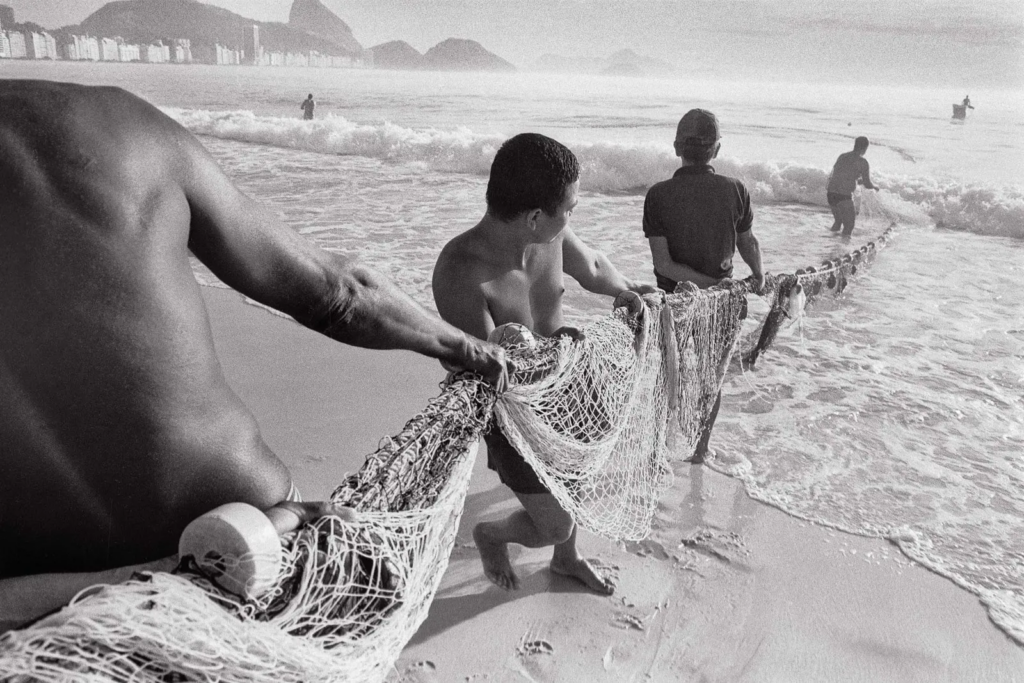
André Arruda. With 100 years of history, the Z-13 colony has stood the test of time and preserves the artisanal fishing methods of Rio´s southern region. O Globo.
In response to the concerns of local residents, public authorities have carried out some interventions in the organization the colony, such as building a dedicated space for fish sales. This was previously conducted outdoors. Since 1991, the area occupied by the Fishing Colony has been included in the protected boundaries of the Copacabana Fort, a listed building.
Over the years, the colony has faced some big challenges because of the growing urbanization of the seafront and the decline in artisanal fishing, due to pollution and the use of industrial techniques. In the face of adversity, the Z-13 Fishing Colony continues to link the past of Copacabana with its present reality. This is a place where the sea and the city meet and where traditional artisanal fishing is resisting change. But the presence of the fishing colony on Copacabana beach goes beyond economic concerns. It is part of the non-material heritage of Rio de Janeiro and the conservation of this space is essential, not only for the memory of the city but also in sustaining practices that connect different generations to ancestral knowledge.
The Z-13 Fishing Colony currently has over 900 associates and in addition to Posto 6 there are hubs in Urca, Rodrigo de Freitas Lagoon, Anil, Muzema, Camorim and Pontal do Recreio.
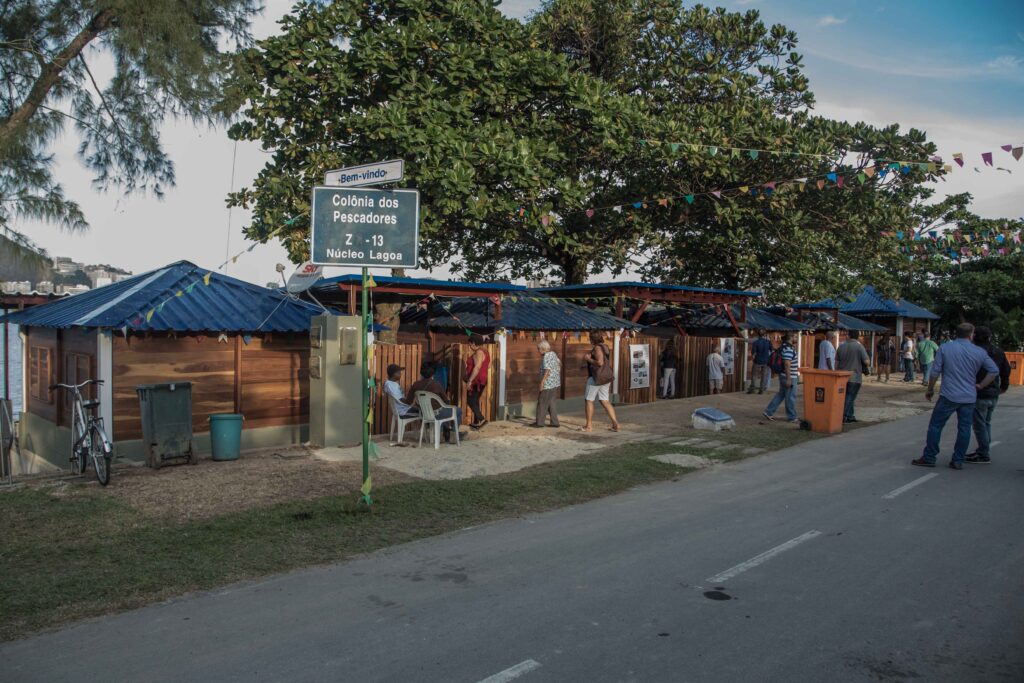
Rodrigo de Freitas Lagoon hub. Photograph provided by Rio de Janeiro City Hall













